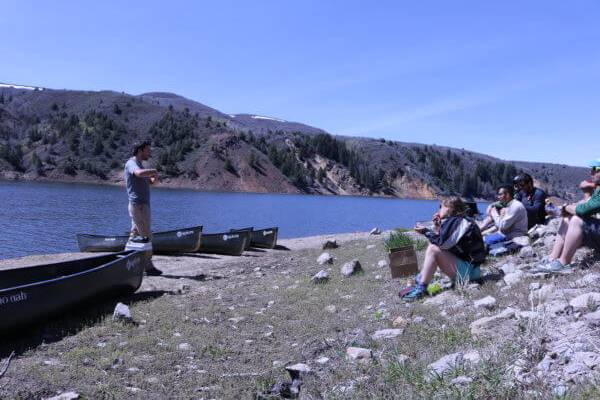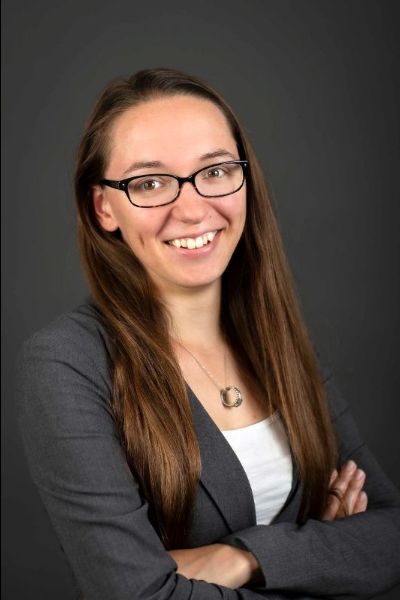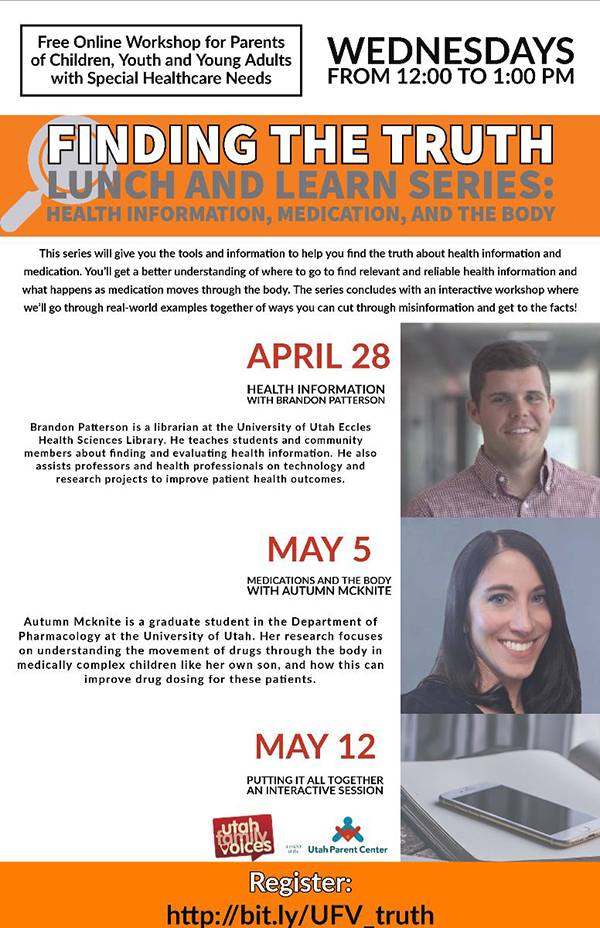Summer 2021 Newsletter

Letter From STEMAP Team
New Horizons for Caitlin Weber
Since 2016, Caitlin Weber has been the backbone of the STEM Ambassador Program (STEMAP): strong, flexible, and essential to the functioning of every part of our work. We are sad to inform our community that in August, 2021, Caitlin has stepped down from her role as Program Manager of STEMAP to take a new position in New Mexico. But we are happy for her taking new directions in her career.
Caitlin came to our project with a background in environmental policy and conservation in southern Florida. At the University of Utah, she quickly learned the skills needed to develop and implement an innovative and coherent process to train scientists to carry out public engagement in community venues. She worked closely with our STEMAP research and evaluation experts, and was instrumental in transforming our early multi-day workshops into the current STEMAP format, which presents guidance in increments that are congruent with the steps needed for successful engagement.
As the Director of STEMAP, I have had the pleasure of working closely with Caitlin throughout the development and expansion of our trainings. I have witnessed the increasing responsibility and expertise she has provided to improve the content and logistics of our trainings. But her work has gone far beyond that, as she has also contributed to the intellectual and academic aspects of the program. Caitlin has taken leadership in shifting our dissemination platforms from in-person to virtual modes, contributed to the writing of papers for peer-reviewed journals, extending our trainings to other universities, and helped to make the program sustainable within our university. She also contributed greatly to the camaraderie and supportive nature of our collaborative research and practitioner team.
We will miss Caitlin’s positive attitude, care for details, and dedication to bring science and society closer, in synergistic ways. We wish her the very best in the future!
Nalini M. Nadkarni
Director, STEM Ambassador Program
2021 Summer Cohorts
STEMAP ran two cohorts this summer, one in partnership with the NSF Center for Synthetic Organic Electrochemistry (CSOE) and one jointly conducted at Northern Kentucky University and Oregon State University. We were thrilled to work with almost fifty participating Ambassadors across the two cohorts as they built relationships in their communities and developed meaningful public engagement opportunities.
Activities took place both virtually and online, as sites and conditions permitted. Ambassadors connected with a huge variety of groups, including animal rescues, farmer’s markets, local libraries, and fishing communities, to name a few. Many of these Ambassadors will be continuing to work on their engagements into the fall, and we look forward to hearing about their continued progress!
We thank the Center for Synthetic Organic Electrochemistry staff and PIs for their support. We also thank our site facilitators for their hard work- Kristy Hopfensperger at Northern Kentucky University, and Ryan Brown and Abby Metzger at Oregon State University.
STEM Community Alliance Program Recruiting Speakers

The STEM Community Alliance Program (STEMCAP) provides science activities, workshops and conservation projects in a number of Youth-In-Custody facilities around the Salt Lake area, and is recruiting interested scientists to participate. Workshops have included topics including electrochemistry, wildlife management, botany, art and science, engineering, and more.
E-mail Laura George, the STEMCAP Program Manager, if you would like more information. You can apply to present with STEMCAP on the program website.
Ambassador Reflections
The following articles were written by STEM Ambassadors about their engagement experiences, which took place remotely or in-person, as conditions allow. Please follow the guidance of your local institutions for scheduling public engagement.
Skyler Ware
 Graduate student, See Group, Division of Chemistry and Chemical Engineering, Caltech
Graduate student, See Group, Division of Chemistry and Chemical Engineering, Caltech
In the weekly Dungeons & Dragons (D&D) sessions I host with friends, some of the most memorable and creative moments have arisen when the group ties real-world physical rules into the fictional world of D&D. Some players have asked questions like: how many “fireball” spells would it take to melt through a castle wall made of ice? Would a polar bear and a yeti compete for the same food source? How high could a character with a strength buff throw another character? During my connections interview with STEMAP staff, I realized that I could incorporate real scientific concepts related to my research into the fantasy world of D&D and use tabletop gaming as a venue for science engagement without breaking players’ immersion in the game.
Since I’m already an active member of my city’s tabletop role-playing game (RPG) community, I decided I would reach out to Odyssey Games, a local game store that connects tabletop gamers through regular community events, for their insight on running an engagement activity in the gaming community. By visiting the store and speaking with event planning staff, I determined that a single 2-3 hour session of a popular game like D&D or Warhammer would be most likely to draw in players. I decided to host a D&D session on one of the store’s “RPG Nights” to engage with players who would be interested in D&D and already somewhat familiar with the system.
In preparing for the campaign, I wanted to incorporate aspects of my research on next-generation battery systems. I decided to focus specifically on the electrolyte – the part of the battery that conducts ions to balance the flow of electricity. I prepared handouts that described the basic components of a battery and three major classes of electrolytes (liquid, polymer gel, and solid-state). I also considered how the properties of those different electrolytes might translate into in-game mechanics and devised a system in which in-game abilities could affect battery performance – for example, casting a spell that deals fire damage could improve the performance of a battery with a solid-state electrolyte by raising its temperature to a reasonable operating range, but fire damage might disable a battery with a flammable liquid electrolyte. I wrote a short adventure outline in which players would find batteries that could power useful items, choose the batteries they think would work best based on their in-game properties, and charge those batteries in-game while combating classic D&D monsters in order to escape from a dungeon.
Even though I wasn’t able to connect with Odyssey Games’ advertising team, I worked with other players at the store to advertise through less formal channels and word of mouth. Based on local COVID-19 guidance, I was able to host the session in person, but after a year of playing D&D with friends over Zoom, I was also prepared to host the session virtually if public health guidelines changed. On the day of the session, I had six players at my table – enough to create a well-rounded party, but not so many that I would be overwhelmed in running the adventure. Two of the participants were new to tabletop gaming, so I worked with other experienced players at the table to help the new players create their characters and understand the rules of the game. I led the players through the story, encouraging them to work together to solve challenges and use each character’s unique talents to help each other. After two hours of gameplay, the group successfully escaped the dungeon.
The event was an overall success – I was able to build trust with participants by guiding a cooperative story and encouraging creative solutions to challenges they faced in-game, and our shared interest in tabletop gaming allowed us to connect on a more personal level. Characters in D&D can also hold various professions, or “classes,” so each player could choose a class for their character that allowed them to express their personal values. The handouts I used to explain how a battery works made it somewhat difficult for participants to ask questions about battery science casually during the game session, but I was able to answer questions before and after the game. I also provided participants with a handout of further resources to learn more about batteries and the ongoing research into improving their performance to address challenges such as grid-scale energy storage.
Since leading the activity, I’ve been approached by other scientists who play tabletop RPGs and asked to share the materials I created for the session so that they can lead similar activities. I plan to refine my materials into a package that I can share with other scientists interested in engagement through gaming. Thanks to Odyssey Games for the opportunity to host this event and to STEMAP for guidance and support!
Brandon Patterson and Autumn McKnite

We were brought together through shared experiences with our children and journeys through parenthood. Brandon had a newborn at the time and was trying to navigate the swaths of information out there for new parents – and on top of that, COVID-19 further complicated parenthood as changing information led to different decisions regarding daycare, visitation from relatives, hospital visits and other aspects of life. Autumn has two children. Her youngest was born with severe combined immunodeficiency (SCID), and has required extensive medical care, including both a bone marrow and kidney transplant. While her son has been fortunate to receive world-class medical care in Salt Lake City, a notable aspect of all his treatment has been the amount of information that was made available to her as a parent, and the challenge in processing this while also caring for her son. Through these experiences as parents, we found a clear common thread in thinking about how information is conveyed to parents, and how it affects the connection between medical providers and parents.
We were fortunate to connect with The Utah Parent Center, an organization who assists parents with children with disabilities. Initial meetings with the organization were encouraging and they proposed a series of lunchtime workshops as a way to involve busy parents. The organization’s mission of parents helping parents allowed us to bring our own journeys into the series of workshops we lead. The Utah Parent Center staff was amazing in guiding us through what they thought their community members would be most receptive to and providing us with feedback that enabled us to adjust and tailor our presentations as we got closer to our workshop dates.
We quickly began considering the best ways to engage the community while connecting our disparate areas of study – health information (Brandon) and pharmacokinetics (Autumn). We soon came up with the idea that both of us would lead a session on our expertise – one on navigating and evaluating health information and another one on how medications move through the body. We would then host a third, interactive workshop where we would encourage parents to use techniques we introduced in previous sessions and apply those to different real-life scenarios.
The series brought together 25 parents from a wide range of backgrounds. Although interactions were limited by the digital format, we received very positive feedback from participants. The workshops coincided with the initial period of COVID-19 vaccine administration, and Brandon received an email after the series of workshops from a parent asking about reliable information in making a decision on whether or not to get the vaccine. He was also recently invited to serve on the editorial board for the Medical Home Portal, a Utah Parent Center resource, and a source for six mountain west states for reliable information about children and youth with special health care needs. This experience has allowed Autumn to see that her personal experiences can be advantageous and used to form connections and better convey information to parents through her work involving pharmacokinetics and dosing in critically ill children. She was also invited to take part in the summer 2021 STEMAP mentor program and is looking forward to supporting the next cohort of STEMAP ambassadors.
Brooke Stanislawski

After setting up my webcam and adjusting the lighting, I waited patiently on the Microsoft Teams call before hearing a cacophony of youthful laughs and chatter that reminded me of schools pre-pandemic. About 15 children piled into the bright classroom while teachers cajoled them into listening. Then, a familiar face, Chris, greeted me and introduced me to the class, while my face was projected on a large smart-screen for everyone in the room. In an instant, I was transported into a classroom at Neighborhood House (NH), an affordable care center for school-age children and adults located in west Salt Lake City.
At Neighborhood House, most of the school-age children come from low-income, single-parent, Spanish-speaking families. NH programs one hour of STEM enrichment each day and value representation of diverse backgrounds in their programming. In 2020, they devoted 250 hours to STEM learning. During our first virtual meeting, I introduced myself as a 4th year PhD student studying solar energy and one of the NH managers recommended that I work with one of the student groups that was starting to learn about the solar system. It was my goal to engage with NH students to create excitement about solar energy, to learn about public perceptions of the technology, and to represent scientists as reliable and caring members of the broader community.
On the day of the activity, we began with an icebreaker that involved sharing names and one reason they love the sun while Chris and Nancy, the teachers of this class, called on students for participation. The energy in the room only grew as we spoke about the role the sun plays in our lives. As I introduced the topic of solar energy and why it is important, the students were glued to the smart-screen, rapid-firing responses to every question. Nancy shared that she has solar panels on her house, which brought the topic even closer to home on their side of the webcam.
The students split into two groups (K-2nd graders in Group A, 3rd-6th graders in Group B). Due to COVID restrictions, students that were normally grouped by age were instead grouped by school in pods, meaning that the age range included K-6th graders. Under Nancy’s guidance, Group A headed outside to create SunPrint Designs where they placed objects on SunPrint paper and watched the paper turn color in the sun. Meanwhile, Group B designed their own model solar panel system. They took a walk in an engineer’s shoes and decided where to place “solar panels,” made of SunPrint paper, on a model house. This was the most exciting part for me because I witnessed the gears turn in their heads and hear them ask questions. I was astounded by their curiosity, insight, and the factors they considered, from shadows to the direction of the sunrise and sunset. These are the issues that face the solar energy field today. Once they “installed” their panels, they headed outside to test their designs. As the SunPrint paper panels turned from blue to white, they measured which parts of the house got the most sunlight, hinting at which locations would be best for producing electricity.
Although I could not see them yet, I knew instantly when Group A returned to the room because I heard a student yell “it didn’t work!” The students took turns holding their SunPrints up to the camera and although it was sometimes difficult to make out the silhouettes of the objects they used, I acknowledged their experiences while encouraging them to see the magic in just the sun’s ability to change the color of the paper itself. They shared their experiences and the objects they had chosen until Group B returned. Each student held up their model house to the webcam and shared their thoughts on the results, demonstrating their understanding of some of the factors to consider when designing a solar panel system.
One of my favorite parts of STEM engagement with students is interacting with them one-on-on, especially with those who are less talkative. Many times, the less talkative students are girls, and I value connecting with those individuals to learn more about their interest in STEM. I was so happy to see the excitement and engagement from many of the students, but I felt somewhat helpless in engaging with those who may not be comfortable speaking in front of the whole class. In future installments of this activity, I plan to include time for each student to walk up to the webcam individually to try to engage with those less talkative and ensure that all voices are heard.
One of the teachers mentioned that this activity seemed to stick with the students more than others had, which describes my experience as well. The chance to engage with and learn from the students at NH stuck with me and will continue to stick with me throughout my STEM career. I admire the incredible teachers and staff at NH and I am so thankful to have been part of such a special community
About the Blog
Discussion channel for insightful chat about our events, news, and activities.
Categories
Featured Posts
Tag Cloud
- UoG (2)
- Guam (2)
- ethnobotany (1)
- environmental policy (1)
- student immersion (1)
- engineering (1)
- Virgin Islands (1)
- USVI (2)
- lionfish (1)
- children's home (1)
- conservation (1)
- marine ecology (1)
- youth (1)
- sustainability (2)
- Utah (1)
- Arizona (1)
- Nevada (1)
- southwest (1)
- virtual (1)
- project management (1)
- training (1)
- naturalist (1)
- forest (1)
- ecosystem (1)
- Puerto Rico (1)
- Spanish (1)
- library (1)
- Huntington's (1)
- medical science (1)
- Emmanuel Ngwoke (1)
